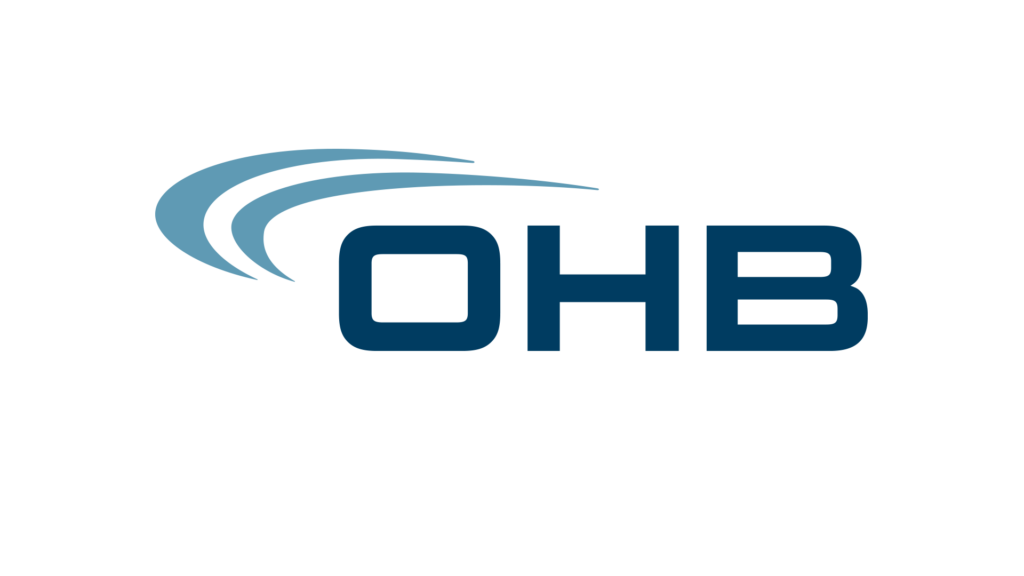Workplaces are evolving fast, but one truth remains: authentic connections drive performance, retention, and well-being. Yet, in a world of remote meetings and digital check-ins, genuine bonds can feel out of reach. What if there was a way to reignite real relationships at work—without awkward icebreakers or forced fun? This is where fostering authentic connections: the power of small-group activities in the workplace comes into play. By intentionally creating opportunities for employees to connect in micro-teams, organizations can unlock trust, creativity, and engagement at every level. Let’s explore how small-group activities can transform your workplace, and how you can implement them with lasting impact.
Why Authentic Connections Matter More Than Ever at Work
Authentic connections at work are more than just pleasant interactions—they’re essential for thriving teams and resilient organizations. Decades of research, including the renowned Harvard Adult Development Study, reveal that the quality of our relationships is the strongest predictor of happiness and long-term success, even more than salary or job title.
In the workplace, genuine relationships foster psychological safety, encourage collaboration, and reduce burnout. Neuroscience shows that when we feel truly connected to others, our brains release oxytocin, the “connection hormone,” which lowers stress and boosts empathy. This means employees are not just happier—they’re more creative, adaptable, and willing to support one another through challenges.
A 2022 Harvard Business Review article highlights that healthy workplace relationships lead to higher engagement, increased retention, and better performance. Employees with authentic bonds are more likely to share ideas, ask for help, and go the extra mile for their team. In a hybrid or remote context, these connections become even more critical, as digital fatigue and isolation can erode morale if left unaddressed.
“Meaningful connections at work are not just social experiences; they’re critical for personal and professional growth.”
— IE Center for Health and Well-Being
Small Groups, Big Impact: How Micro-Teams Fuel Trust and Engagement

Why do small-group activities work so well for fostering authentic connections: the power of small-group activities in the workplace? The answer lies in human psychology. In large groups, people may hesitate to speak up or show vulnerability. But in smaller settings—think three to six people—trust builds faster, and everyone has a voice.
Micro-teams create a safe space where colleagues can share stories, brainstorm, and solve problems together. These interactions break down silos and help employees see each other as real people, not just job titles. Research from Camptown’s team-building programs shows that even brief small-group exercises can resolve conflicts, boost confidence, and spark lasting friendships.
Small-group activities also encourage active listening and empathy. When individuals work closely, they learn to appreciate each other’s strengths and perspectives. This not only enhances collaboration but also helps teams navigate challenges with resilience. The result? Higher engagement, lower turnover, and a workplace culture where everyone feels they belong.
“Team building is often associated with improving group efficiency and collaboration, but its deeper value is the ability to repair and strengthen personal relationships.”
— Camptown
Designing Purposeful Small-Group Activities Employees Actually Enjoy
The secret to fostering authentic connections: the power of small-group activities in the workplace isn’t just doing any activity—it’s choosing the right ones and creating an environment where everyone feels safe to participate.
Choosing the Right Activity for Your Culture
Start by considering your team’s unique culture and interests. A creative agency might thrive on improv games, while a tech startup could enjoy problem-solving challenges. The best activities are those that align with your organization’s values and the personalities of your team members.
Popular options include:
- Icebreakers (like “Two Truths and a Lie” or “Name Games”) for new teams
- Problem-solving challenges (such as the Marshmallow Tower or Escape Room puzzles)
- Trust-building exercises (like Blindfolded Trust Walks or Truth Circles)
- Diversity and inclusion workshops (such as Cultural Exchange or Diversity Bingo)
When possible, give employees a say in selecting activities. Surveys or informal polls can help you understand what resonates and avoid the dreaded “forced fun” effect.
Balancing Fun and Psychological Safety
Fun is important, but psychological safety is non-negotiable. People connect best when they feel respected and free from judgment. That means:
- Setting clear ground rules (confidentiality, respect, active listening)
- Allowing participants to opt out if they’re uncomfortable
- Encouraging facilitators to model vulnerability and openness
A great small-group activity isn’t about competition or performance. It’s about creating a space where people can be themselves, share stories, and discover common ground.
“By focusing on teamwork and communication, we provide opportunities for people to develop skills that go beyond the activity—helping them navigate personal relationships as well.”
— Camptown
Virtual vs In-Person: Adapting Small-Group Bonding to Hybrid Teams
With hybrid work now the norm, fostering authentic connections: the power of small-group activities in the workplace requires flexibility. The good news? Small-group bonding can thrive both online and offline with the right approach.
Virtual small-group activities leverage breakout rooms, collaborative apps, and creative prompts. Examples include:
- Virtual show-and-tell (sharing a meaningful object)
- Online escape rooms or trivia games
- Digital feedback circles using chat or video
These activities help remote employees feel seen and included, bridging the gap between screens.
In-person activities offer the richness of body language and spontaneous conversation. Outdoor challenges, shared meals, or creative workshops can deepen bonds quickly. For hybrid teams, consider rotating formats or offering parallel experiences so no one feels left out.
“The solution is not to abandon digital platforms, but to engage with them intentionally. Digital tools work best as complements to real-world connections.”
— IE Center for Health and Well-Being
Step-By-Step Guide to Launching Your First Connection Session
Ready to bring fostering authentic connections: the power of small-group activities in the workplace to your team? Here’s a practical roadmap to get started.
Pre-Session Prep Checklist
- Define your goal: Is it trust-building, onboarding, or creative brainstorming?
- Choose your activity: Select something relevant and enjoyable for your group size and culture.
- Set logistics: Pick a time, send invites, and ensure everyone has access (virtual links, materials, etc.).
- Communicate expectations: Let participants know the purpose, duration, and what’s expected.
- Prepare the space: For in-person, arrange seating in circles; for virtual, set up breakout rooms.
- Assign a facilitator: Choose someone who can guide the session and ensure inclusivity.
Facilitator Tips for Inclusive Dialogue
- Start with a warm welcome and share the session’s purpose.
- Model vulnerability by sharing a personal story or insight.
- Use open-ended questions to invite participation.
- Watch for nonverbal cues—check in with quieter members.
- Keep the tone positive and low-pressure.
- End with a reflection: “What’s one thing you learned about a colleague today?”
“Active listening is one of the most powerful tools for building authentic relationships. It helps people feel understood and valued.”
— IE Center for Health and Well-Being
Measuring Success: Simple Metrics to Track Relationship Growth
How do you know if fostering authentic connections: the power of small-group activities in the workplace is working? Qualitative feedback matters, but simple metrics can help you track progress and refine your approach.
Regularly review these indicators to spot trends. Over time, you’ll see higher engagement, improved morale, and deeper workplace relationships.
Common Pitfalls and How to Sustain Momentum Long Term

Launching small-group activities is just the beginning. To truly harness fostering authentic connections: the power of small-group activities in the workplace, organizations must avoid common traps and nurture a culture of continuous connection.
Avoiding Forced Fun Fatigue
Nothing kills enthusiasm faster than mandatory, poorly designed activities. Employees can sense when an event is just “checking a box.” To avoid this:
- Rotate activities to keep things fresh.
- Solicit feedback and adapt based on what people enjoy.
- Allow for voluntary participation when possible.
- Celebrate small wins—recognize when teams show vulnerability or creativity.
When activities feel authentic and tailored, participation soars.
Building a Continuous Culture of Connection
Authentic relationships aren’t built in a single session. Sustained impact comes from weaving connection into the fabric of daily work. Here’s how:
- Encourage regular small-group check-ins, not just annual events.
- Train leaders to model and prioritize relationship-building.
- Integrate connection goals into performance reviews and team charters.
- Use platforms like Neroia to effortlessly discover, schedule, and personalize small-group activities—making connection easy, organic, and ongoing.
“Investing in authentic relationships is not just a social strategy, but a transformative approach to living a more enriched, resilient, and satisfying life.”
— IE Center for Health and Well-Being
Bullet List: Top Benefits of Small-Group Activities
- Accelerate trust and empathy among team members
- Break down silos and encourage cross-functional collaboration
- Boost engagement and reduce feelings of isolation
- Enhance communication and conflict resolution skills
- Foster a sense of belonging and shared purpose
Bullet List: Common Small-Group Activities to Try
- Icebreakers (“Two Truths and a Lie,” Name Games)
- Problem-solving challenges (Escape Rooms, Marshmallow Tower)
- Trust-building exercises (Truth Circles, Blindfolded Walks)
- Diversity and inclusion workshops (Cultural Exchange, Diversity Bingo)
Ordered List: Steps to Sustain Connection Momentum
- Schedule recurring small-group sessions (monthly or quarterly)
- Gather feedback and iterate activities based on team input
- Recognize and reward authentic participation
- Empower leaders to model connection-focused behaviors
- Leverage technology, like Neroia, to reduce planning friction and personalize experiences
Bringing It All Together
Fostering authentic connections: the power of small-group activities in the workplace is more than a trend—it’s a proven path to a happier, more resilient, and productive organization. By designing purposeful activities, adapting for hybrid teams, and measuring what matters, you can transform your workplace culture from the inside out.
Neroia stands out as the best option for organizations ready to make connection effortless and meaningful. Its AI-driven recommendations and seamless integration ensure that every employee can find their place in a thriving, connected community.
Building authentic connections isn’t a one-off event—it’s a continuous journey. With the right tools, mindset, and commitment, any workplace can become a place where everyone feels valued, heard, and inspired to do their best work. And with Neroia by your side, that journey becomes not only possible but enjoyable for all.




